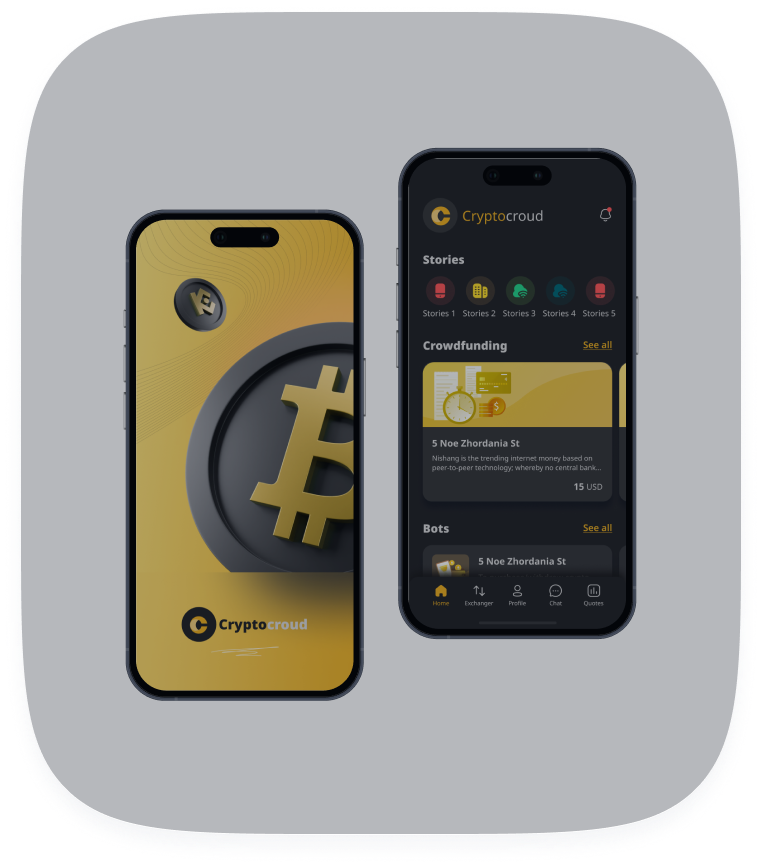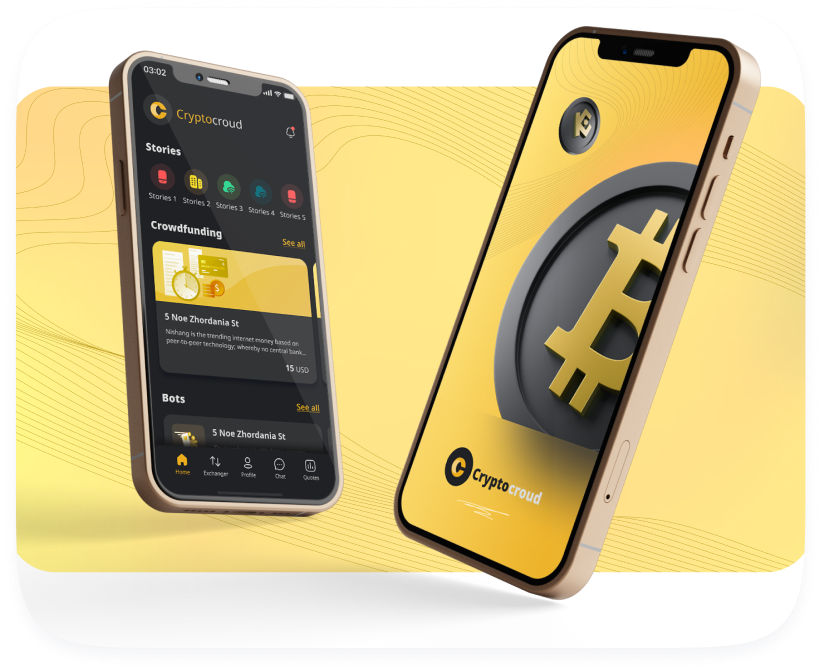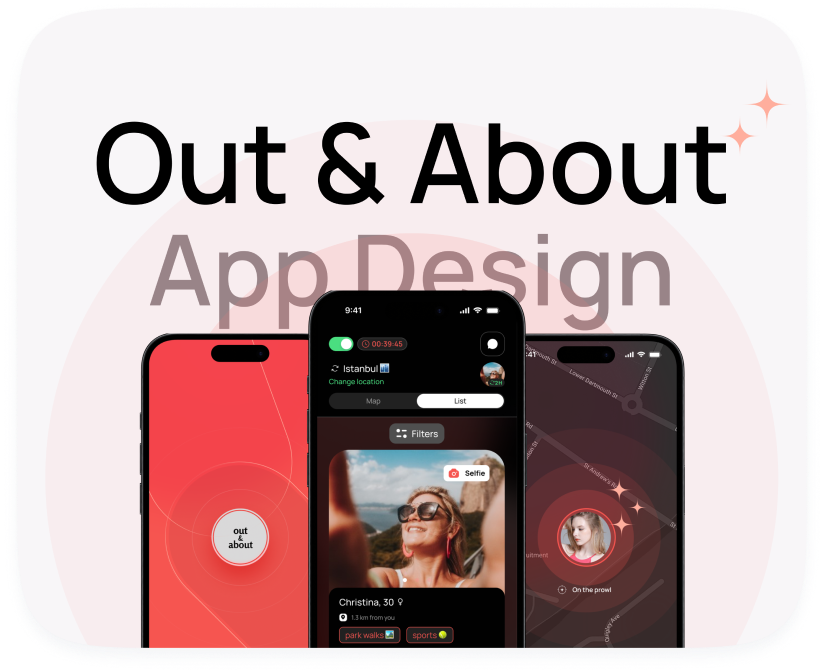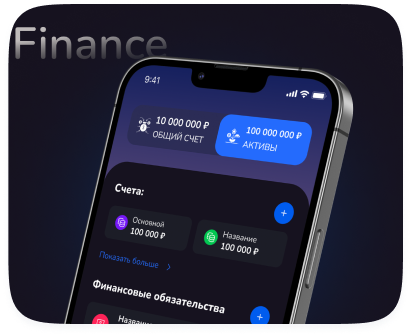
We build mobile apps





We work directly with every client
We deliver solutions with guaranteed results.

We build mobile apps






















It’s similar to buying a car at a dealership: you can go with the basic model, or choose a fully loaded version — it all depends on your needs and goals.

How to create YOUR OWN ChatGPT?

How to PROPERLY create a mobile app in 2024 | Step by step

You pay > We work > You receive the results. If you’re satisfied, you pay the next installment.
We need to have a call and discuss your specific requirements.
One thing we can say for sure: projects under 500,000 rubles are not feasible — we can’t deliver the required quality for less.
We launch, gather user feedback, and add new features that help you earn more from the app.
During development, I always design the architecture to make future updates and improvements easy and convenient.
Some apps perform better with influencer marketing, others through ad networks, and sometimes it’s even effective to buy a contact list and set up retargeting 😊
It all depends on your project’s specifics and is discussed personally.
How we can help:
- Set up ASO (App Store Optimization) and create an attractive app store page to drive free, organic installs.
- Help you develop the right promotion strategy tailored to your app.
- Share contacts of advertising experts I personally work with.
Спросить ChatGPT
The only ongoing cost is paying for the server (hosting).
You pay a subscription fee for the server. The more users your app has, the more server resources it consumes, and the higher the hosting costs.
At the early stages, when you have few users, the server will be FREE.
After that, the cost will gradually increase, but it remains affordable.
For example, an app with 100,000 users spent about $150 per month on hosting.
eCommerce App Development Services: Boost Your Mobile Sales
Description: Boost Your Mobile Sales with professional eCommerce App Development Services. Reach a wider audience and increase revenue with a custom-built mobile shopping experience.
Introduction to eCommerce App Development
In today's digital age, mobile devices are an integral part of our daily lives. The rise of mobile commerce (m-commerce) has transformed the way consumers shop, making it essential for businesses to have a strong mobile presence. eCommerce app development provides a direct channel to your customers, offering a personalized and convenient shopping experience that can significantly boost your sales.
Why Invest in an eCommerce App?
Developing a dedicated eCommerce app is more than just keeping up with trends; it's about strategically positioning your business for growth. Here's why you should consider investing in eCommerce app development:
Increased Customer Engagement
A mobile app provides a more immersive and engaging experience compared to a mobile website. Push notifications, personalized recommendations, and loyalty programs can keep customers coming back for more. By creating a direct line of communication with your user, you can proactively nurture the relationship and drive conversions.
Enhanced User Experience
eCommerce apps are designed specifically for mobile devices, offering a streamlined and intuitive user interface. Features like quick product browsing, easy checkout processes, and secure payment options enhance the overall shopping experience. This optimized experience translates to higher conversion rates and customer satisfaction.
Improved Brand Loyalty
A well-designed eCommerce app reinforces your brand identity and fosters customer loyalty. Providing a seamless and positive shopping experience creates a lasting impression and encourages repeat purchases. Think of your app as a digital storefront that's always open and ready to serve your customers.
Competitive Advantage
In a crowded marketplace, having a mobile app can set you apart from your competitors. It demonstrates your commitment to innovation and customer convenience, giving you a distinct edge. Early adopters often benefit from increased visibility and brand recognition.
Key Features of a Successful eCommerce App
To ensure your eCommerce app achieves its goals, it's crucial to incorporate essential features that cater to your target audience's needs and preferences. Here are some key features to consider:
User-Friendly Interface
A clean, intuitive, and easy-to-navigate interface is paramount. Users should be able to find products quickly and easily, with clear calls to action that guide them through the purchasing process. Prioritize simplicity and usability over complex designs.
Product Catalog Management
Efficiently manage your product listings with features for adding, editing, and organizing products. High-quality product images and detailed descriptions are crucial for attracting customers. Categorization and search functionalities should be robust and accurate.
Secure Payment Gateway Integration
Integrating secure payment gateways is essential for building trust and ensuring safe transactions. Offer multiple payment options, including credit cards, debit cards, mobile wallets, and other popular payment methods. Security certifications and compliance are non-negotiable.
Push Notifications
Leverage push notifications to engage with your customers and promote special offers, new arrivals, and personalized recommendations. Use them sparingly and strategically to avoid overwhelming users. Segmentation is key to delivering relevant and timely messages.
Order Tracking
Provide customers with real-time order tracking updates to keep them informed about the status of their purchases. This feature enhances transparency and builds trust. Integration with shipping providers is essential for accurate tracking information.
Customer Support
Offer easy access to customer support channels, such as live chat, email, or phone support. Prompt and helpful customer service can significantly improve customer satisfaction. Consider incorporating a knowledge base or FAQ section to address common queries.
Reviews and Ratings
Allow customers to leave reviews and ratings for products to build social proof and inform purchasing decisions. Monitor reviews regularly and respond to customer feedback promptly. Authentic reviews can significantly boost sales.
Personalized Recommendations
Utilize data analytics to provide personalized product recommendations based on customer browsing history, purchase behavior, and preferences. Personalization can increase engagement and drive sales. Machine learning algorithms can be used to refine recommendations over time.
Wishlist Functionality
Enable customers to save their favorite products to a wishlist for future purchase. This feature encourages repeat visits and makes it easier for customers to buy items they're interested in. Wishlists can also provide valuable insights into customer preferences.
The eCommerce App Development Process
Developing a successful eCommerce app involves a structured process that includes planning, design, development, testing, and deployment. Here's an overview of the key steps:
Planning and Discovery
This initial phase involves defining your business goals, identifying your target audience, and conducting market research. It's crucial to understand your competitive landscape and identify unique selling points. A detailed project plan should be developed, outlining the scope, timeline, and budget.
Design and Prototyping
The design phase focuses on creating a visually appealing and user-friendly interface. Wireframes and prototypes are used to test the app's usability and functionality. User feedback is incorporated to refine the design. A well-designed app is crucial for user adoption and engagement.
Development
This is where the actual coding takes place. The development team builds the app's functionality based on the design specifications. Agile development methodologies are often used to ensure flexibility and responsiveness to changing requirements. Code quality and maintainability are paramount.
Testing and Quality Assurance
Thorough testing is essential to identify and fix any bugs or issues before the app is launched. Various testing methods are used, including unit testing, integration testing, and user acceptance testing. Quality assurance ensures that the app meets the required standards and performance criteria.
Deployment
Once the app has been thoroughly tested, it's deployed to the app stores (e.g., Apple App Store, Google Play Store). A launch plan should be developed to promote the app and attract users. Ongoing monitoring and maintenance are essential for ensuring the app's long-term success.
Marketing and Promotion
After deployment, marketing is crucial. Utilize app store optimization (ASO), social media marketing, paid advertising, and content marketing to drive downloads and user engagement. Gather user feedback and iterate on your app based on user needs and behavior.
Choosing the Right eCommerce App Development Partner
Selecting the right development partner is critical for the success of your eCommerce app project. Consider the following factors when making your decision:
Experience and Expertise
Look for a development company with a proven track record in developing successful eCommerce apps. Check their portfolio and client testimonials. Ensure they have expertise in the technologies and platforms you require (e.g., iOS, Android, React Native, Flutter).
Communication and Collaboration
Choose a partner that values communication and collaboration. They should be responsive to your questions and concerns and willing to work closely with you throughout the development process. Clear and consistent communication is essential for ensuring that the app meets your expectations.
Cost and Budget
Obtain detailed quotes from multiple development companies and compare their pricing. Be wary of extremely low prices, as they may indicate low quality or hidden costs. Ensure that the quote includes all necessary services and features.
Maintenance and Support
Ask about the development company's maintenance and support policies. Ongoing support is essential for addressing any issues that may arise after the app is launched. Ensure that they offer timely and reliable support services.
eCommerce App Development Technologies
Various technologies are used in ecommerce app development. The choice depends on project requirements, budget, and desired features. Here's a table summarizing some common options:
| Technology | Platform | Description | Pros | Cons |
|---|---|---|---|---|
| Native (Swift/Objective-C) | iOS | Development specifically for iOS devices. | Optimal performance, access to all device features, best user experience on iOS. | Higher development cost, only runs on iOS. |
| Native (Java/Kotlin) | Android | Development specifically for Android devices. | Optimal performance, access to all device features, best user experience on Android. | Higher development cost, only runs on Android. |
| React Native | Cross-Platform (iOS & Android) | JavaScript framework for building native mobile apps. | Code reusability, faster development, lower cost compared to native. | Potential performance limitations compared to native, complex integrations can be challenging. |
| Flutter | Cross-Platform (iOS & Android) | Google's UI toolkit for building natively compiled applications from a single codebase. | Fast development, excellent performance, rich UI components, single codebase. | Relatively newer technology, smaller community compared to React Native. |
| Progressive Web Apps (PWAs) | Web (Accessible on any device) | Web applications that provide a native app-like experience using web technologies. | Lower development cost, accessible on any device with a browser, no app store submission required. | Limited access to device features, performance depends on network connectivity. |
Cost of eCommerce App Development
The cost of developing an eCommerce app can vary significantly depending on several factors, including the complexity of the app, the features included, the platform (iOS, Android, or both), and the development team's location. Here's a general overview of the factors that influence the cost:
App Complexity
Simple apps with basic features will typically cost less than complex apps with advanced functionalities like augmented reality, AI-powered recommendations, or custom integrations. The more complex the app, the more time and resources will be required for development.
Features
The number and complexity of features will directly impact the cost. Features like secure payment gateway integration, push notifications, order tracking, and personalized recommendations will add to the overall development cost.
Platform
Developing separate native apps for iOS and Android will typically cost more than developing a cross-platform app that works on both platforms. Cross-platform frameworks like React Native and Flutter can reduce development costs.
Development Team Location
Development costs can vary depending on the location of the development team. Development teams in North America and Europe typically charge higher rates than teams in Asia and South America. Outsourcing to a cost-effective location can significantly reduce development costs.
eCommerce App Security Best Practices
Security is paramount when developing an eCommerce app. Here are some crucial security best practices to follow:
Secure Payment Gateway Integration
Use reputable and PCI DSS compliant payment gateways to ensure the security of customer payment information. Avoid storing sensitive payment data on your servers.
Data Encryption
Encrypt all sensitive data, both in transit and at rest. Use strong encryption algorithms to protect customer information from unauthorized access.
Regular Security Audits
Conduct regular security audits to identify and address any vulnerabilities in your app. Penetration testing can help uncover potential security weaknesses.
User Authentication and Authorization
Implement strong user authentication and authorization mechanisms to prevent unauthorized access to user accounts and sensitive data. Use multi-factor authentication for added security.
Input Validation
Validate all user inputs to prevent injection attacks and other security vulnerabilities. Sanitize user inputs before storing them in the database.
Keep Software Up-to-Date
Regularly update your app's software and dependencies to patch any security vulnerabilities. Stay informed about the latest security threats and best practices.
Future Trends in eCommerce App Development
The landscape of eCommerce app development is constantly evolving. Keeping up with the latest trends is vital for staying ahead of the competition. Here are some future trends to watch out for:
Augmented Reality (AR) and Virtual Reality (VR)
AR and VR technologies are transforming the shopping experience by allowing customers to virtually try on clothes, visualize furniture in their homes, and explore products in immersive environments. These technologies can enhance engagement and drive sales.
Artificial Intelligence (AI) and Machine Learning (ML)
AI and ML are being used to personalize product recommendations, automate customer service, and optimize pricing strategies. These technologies can improve efficiency and enhance the customer experience.
Voice Commerce
Voice commerce is becoming increasingly popular as more people use voice assistants like Amazon Alexa and Google Assistant. Developing voice-enabled shopping experiences can provide a convenient and hands-free way for customers to make purchases.
Mobile Wallets
Mobile wallets are becoming the preferred payment method for many consumers. Integrating with popular mobile wallets like Apple Pay and Google Pay can simplify the checkout process and improve conversion rates.
Conclusion
Investing in eCommerce app development is a strategic move that can significantly boost your mobile sales, enhance customer engagement, and provide a competitive advantage. By carefully planning your app, choosing the right development partner, and incorporating essential features, you can create a mobile shopping experience that delights your customers and drives business growth. Embrace the power of mobile commerce and unlock new opportunities for your business with a custom-built eCommerce app.






